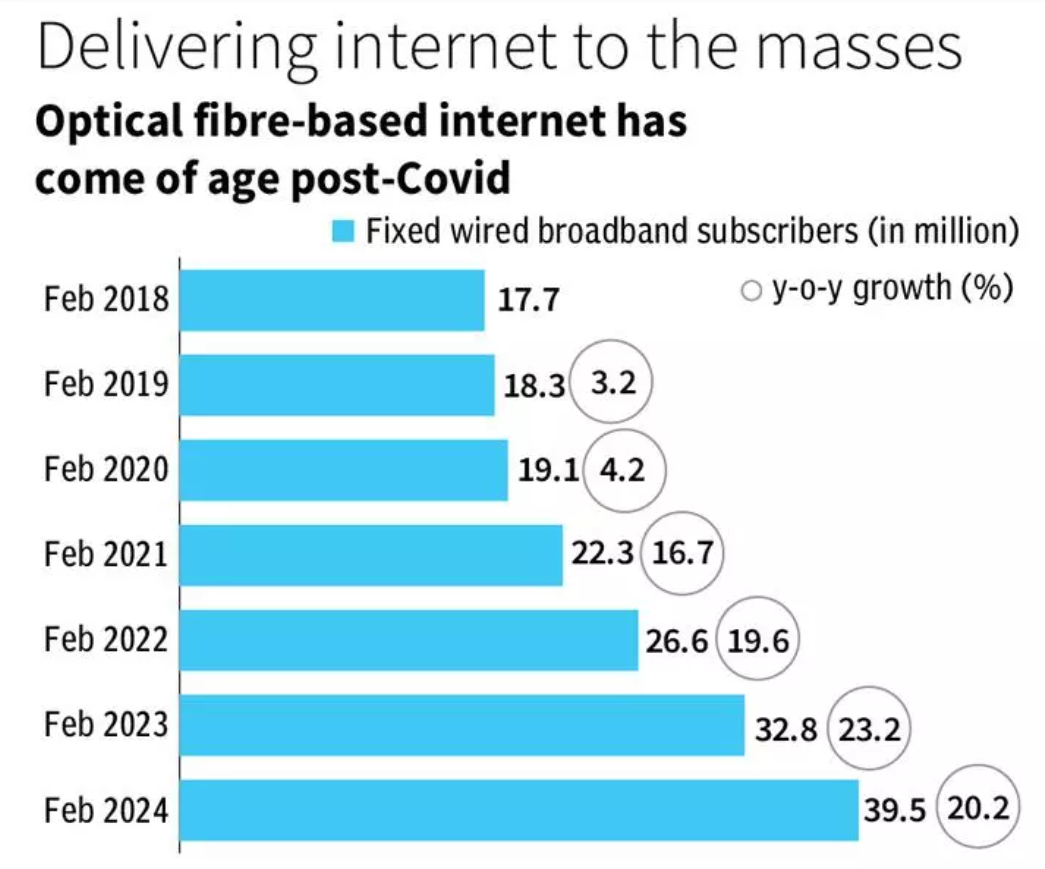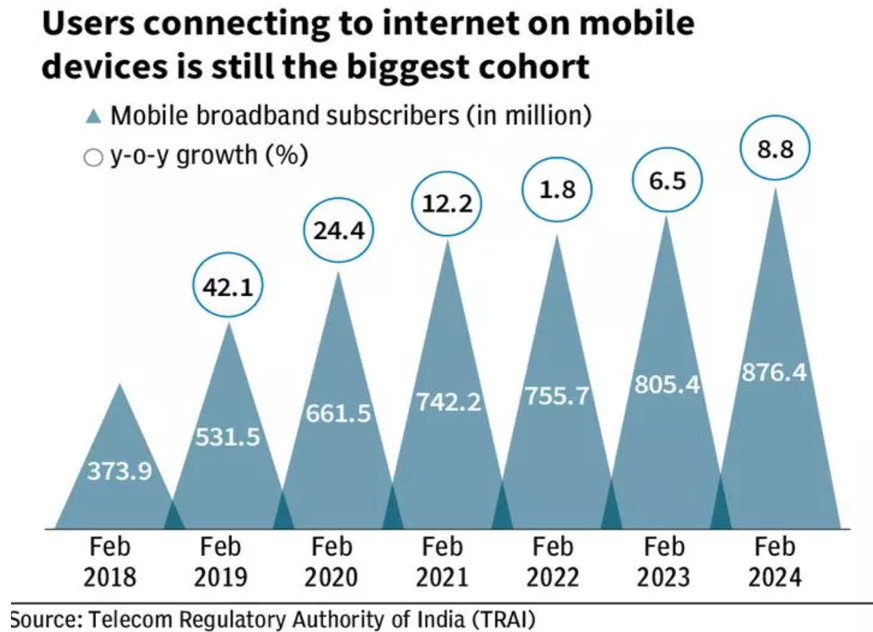Will satellite broadband services truly be a game-changer?
(Source – The Hindu, International Edition – Page No. – 13)
| Topic: GS3 – Science and Technology |
| Context |
|
Current State of Broadband Penetration in India
- India is currently facing a broadband penetration gap of 48%, despite 25 years of terrestrial mobile services.
- The lack of progress in expanding broadband services could persist for another 25 years if the regulatory environment remains unchanged.

Debate on Spectrum Allocation for Satcom
- The allocation of spectrum for satellite broadband services has sparked heated debates.
- Legacy telecom operators are opposing new players, like satellite broadband companies, receiving preferential treatment regarding spectrum access.
- Some industry players argue for the auctioning of spectrum to ensure fair competition, given the substantial investments made by existing telecom companies over the years.
- Others suggest that spectrum should be allocated administratively, as is the common practice globally.
Satcom as a Solution to the Digital Divide
- Satellite communication (satcom) is seen as a potential solution to bridge the digital divide, especially in remote areas where the cost of laying fibre is prohibitive.
- Satcom can complement urban services by providing additional capacity for backhaul services.
- Satellites offer connectivity in areas that terrestrial networks cannot reach, making them particularly valuable for remote locations in India.
Global Perspective on Satcom
- Internationally, companies like AT&T view satellites as a complementary service to existing terrestrial services rather than a replacement.
- A significant number of satellites and a robust infrastructure are necessary to deliver consistent satellite service.
- The cost per bit for satellite-based services remains high, making them less viable for standalone use.
- AT&T plans to integrate satellite services with fiber and wireless services to offer customers a comprehensive connectivity solution.
| Satcom in India |
Challenges for Satcom in India
Potential for Satcom in India
|
Potential for Satcom in India
- Despite challenges, there is potential for satcom to play a role in India’s digital ecosystem.
- Satcom could offer substantial improvements in availability and network utilization, especially in rural and remote areas.
- It will likely coexist with other technologies, such as fibre and wireless, providing more options for customers.
- However, the success of satcom depends on spectrum allocation rules and the ability to address the cost challenges.
Conclusion
- The future of satcom in India remains uncertain but promising.
- Regulatory decisions on spectrum allocation will determine whether satellite broadband can contribute to expanding India’s digital infrastructure, particularly in underserved regions.
- While challenges remain, satcom is expected to complement existing services rather than replace them, contributing to a more connected India in the long term.

| Practice Question: Evaluate the role of satellite communication in bridging India’s digital divide. How should spectrum allocation policies be framed to ensure fair competition between existing telecom operators and new satellite broadband services? (150 Words /10 marks) |
For more such UPSC related Current Affairs, Check Out: Working Principle of Speed Guns for UPSC
